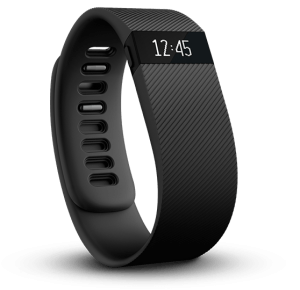J
Jeff Reser
Guest

Jeff Reser
Jeff Reser gives his top 5 reasons you should make data connectivity a priority.
Companies and consumers are finding new ways to integrate data into their daily lives, and it’s changing how we do business. Many of you have likely experienced some of these technologies, and while some may excite you others may creep you out. Be that as it may, the data movement is here and brings with it significant reasons for you and your business to invest more in data and high-performance data integration. Here are my top 5, but I am sure you can come up with a few more:
1. Drones have evolved beyond the beehive: transmitting data for compliance

Drones are useful for safety and compliance reasons
The Internet of Things (IoT) is alive and kicking. At a recent IBM Maximo conference, a company called Interloc Solutions demonstrated how drones could be used in conjunction with their Mobile Informer app to transmit oil rig structural and pipeline data from remote locations back to a central manager. To me, this is a game changer for safety and compliance. Sure, the idea of drones for surveillance can be a little disturbing, but this is one of the more compelling use cases where using data enhances day-to-day operations and is an effective way to save time and money.
2. Fitbit data saved my life: healthcare data for changing outcomes

IoT devices like Fitbit have broad applications
Wearable technology is changing lives—mine included. Over the years, I have developed a hard-to-pin-down heart condition whereby every 4-6 weeks I have an “episode” that lasts for 4 to 5 hours during which my heart pounds like it is beating out of my chest and my body is suddenly drained of energy. When I brought it up to my cardiologist, he was baffled because my heart appeared normal otherwise, and the dreaded event never occurred during that 24-hour period when I was fitted with an inconvenient monitor with electrodes.
I recently purchased a Fitbit for myself so that I could monitor my heart rate, workouts, and sleep habits. Interestingly, just two days after I got my Fitbit, I was in the office and I felt another episode coming on. I kept checking my Fitbit and to my surprise, my heart rate was getting lower and lower – I previously had erroneously thought my heart was racing when these events occurred. With my Fitbit data and associated graph in hand I went back to my cardiologist, thrilled that I had captured the data during an actual heart episode. Ultimately, this story has a happy ending as my doctor and I were able to come up with a plan, but this shows how critical it is to have data at your fingertips when deciding on your own healthcare, treatment plans, and other personal medical issues.
3. Neural networks that make me nervous: deep learning analytics

Neural networks will improve business analytics
Even though the thought of a thinking computer may give me the creeps, neural networking shows lots of potential for solving business problems. In short, neural networks have the ability to recognize items of interest in large quantities of unstructured and binary data, and to deduce relationships without needing specific models or programming instructions. Think IBM Deep Blue as a chess master or Google’s foray into this technology by searching through massive video libraries to find specific shapes, colors and objects. This kind of deep learning is finding its way into business analytics as we speak, and could dramatically change the way all of us interact with multimedia and information in general.
4. Predicting when to predict success: analytics for B2B relationships

Data can act like a crystal ball
Predictive analytics is being used more and more in the retail industry to develop more targeted advertising and marketing based on consumers’ location, buying behaviors, buying history, income and even the size of their bank accounts. Predicting customer behavior is now easier than ever as is the ability to perform statistical analyses on very large numbers of records using many attributes. Today this is perhaps most applicable in the consumer world, but it’s only a matter of time before it spills into the B2B world as a method of predicting successful partnerships and investments.
5. Data flows into data lakes: defining the new normal

Data lakes are the new normal
Data lakes eschew traditional notions of what a database should be by putting all of the data from a variety of sources into a big Hadoop repository. Instead of defining a data model, you have a high-level idea of what data exists in the lake and you build views into the data as you go along. It’s an incremental way of building a large-scale database. Today, there are some drawbacks to data lakes—like the lack of access control and data security—but as the tools evolve these problems are sure to be addressed.
Whether we are talking about a data technology that affects you personally or affects how you do business, finding the right tools to help translate the relevant data is of the utmost importance.
Data you can’t access doesn’t matter
This list touches upon just a few new data sources that are likely to become increasingly part of our everyday lives and offering the potential to yield deep and sometimes life-saving insights. As IoT becomes more prevalent, along with expanding data sources like social media, mobile and the cloud, being able to easily and quickly connect and access all that data is going to be essential. That’s why we expect data connectivity solutions like Progress® DataDirect Cloud™ and DataDirect Connect® will be so important in the coming years.
What do you think?
I would love to hear your thoughts around emerging data sources that will change our lives and the way we do business. What would you add to this list? Please share your thoughts in the comments, or reach out to me on Twitter at @JeffReserNC.
Author information

Sr. Product Marketing Manager, Progress DataDirect Cloud at Progress
| Facebook | Google+ | LinkedIn |
Continue reading...
